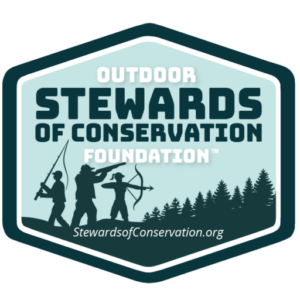


Shareable media promoting conservation from the Outdoor Industry Communication Council (OICC) – see below for more details.
America’s Firearms Industry Sustains 400,000 Jobs
This Labor Day, as we salute the passing of another summer and celebrate the American workers who are the real heroes of our economy, pause to consider the economic and job-creation engine that the outdoor industry provides the nation.
Economists tell us that north of 150,000 American jobs are created directly by the manufacture, distribution, and retailing of firearms, ammunition, and hunting/shooting supplies. That likely includes your neighbor, relative, or someone in your town. Another 100,000 jobs are created by suppliers to the firearms industry. Think of all the injection-molded polymers and components that go into a modern gun and its ammunition.
Then add another 123,000 of what economists call “induced” jobs. Those are jobs created by local spending on goods and services by gun or ammunition manufacturers. These sorts of jobs are created when the direct employees and suppliers’ employees go out in your communities and spend their incomes on goods and services. Without the first-order jobs, these secondary jobs and incomes could never be created or sustained.
Wages paid to these 400,000 employees add up to more than $25 billion. But that’s hardly the extent of the economic benefit. When you look at the wider impact of the firearms industry—the homes and vehicles that employees purchase, the vacations and the hunting trips they take—the outdoor-retail industry contributes a whopping $80 billion to America’s economy every year.
Now consider all the taxes that these employees contribute to local, state, and federal governments. Nearly $7.5 billion is paid just in state and federal taxes, without factoring local taxes.
It should be noted that this economic activity and job creation is generated by the manufacturing and distribution of firearms. We’re not talking here about hunting outfitters or fishing lodges or elk guides, all of which provide additional economic activity, especially in rural communities. That $80 billion annual economic impact is generated by the manufacture and distribution of rifles, handguns, shotguns, and muzzleloaders—along with the ammunition to fuel them—that appear on retailers’ racks and cases, and which many of us will shoulder and carry into the field with hunting seasons that start this month.
There’s also an excise tax of 10 to 11 perce
nt on the wholesale price of firearms, ammunition, as well as on archery equipment such as bows and arrows, that is paid by manufacturers. Revenue from these excise taxes gets sent to state wildlife agencies and funds things such as; purchasing, managing and improving wildlife habitat, it helps biologists manage wildlife, and it helps states produce hunter education courses and build shooting ranges.
The past few years of this special tax have averaged $1.1 billion that was plowed right back into wildlife conservation work. We’ll detail all the work that excise tax does in another installment of this series. But for now, as you take a well-deserved break from your own job, salute all the workers who make our firearms, and who fuel a big part of our national economy.
About the Outdoor Industry Communication Council (OICC):
Formed around the commitment to educate all Americans about the origins of conservation funding in America, the Outdoor Industry Communication Council (OICC) is managed by Outdoor Stewards of Conservation Foundation (OSCF) and Wildlife Management Institute (WMI). OICC works with outdoor writers to develop informative content that is available to all outdoor organizations and media at no cost. A primary goal of the OICC is to better inform and promote the positive contributions that wildlife agencies, industry manufacturers, NGO’s and end users such as hunters, anglers, trappers and target shooters make to conservation. Outdoor organizations interested in conservation are welcome to use any OICC content to expand the reach of messages created by the OICC. To become a member of the Outdoor Industry Communication Council, contact Jim Curcuruto of OSCF (203) 450-7202 jim@stewardsofconservation.org or Jon Gassett of WMI at (502) 330-9025 jgassett@wildlifemgt.org. There are no costs involved to become a member of the OICC.
Members may utilize OICC materials as they see fit with no restrictions. For additional information visit https://www.outdoorstewards.org/outdoor-industry-communication-council-oicc/
This project is funded by the Multistate Conservation Grant Program (F23AP00404), a program supported with funds from the Wildlife and Sport Fish Restoration Program and jointly managed by the Association of Fish and Wildlife Agencies and the U.S. Fish and Wildlife Service.
